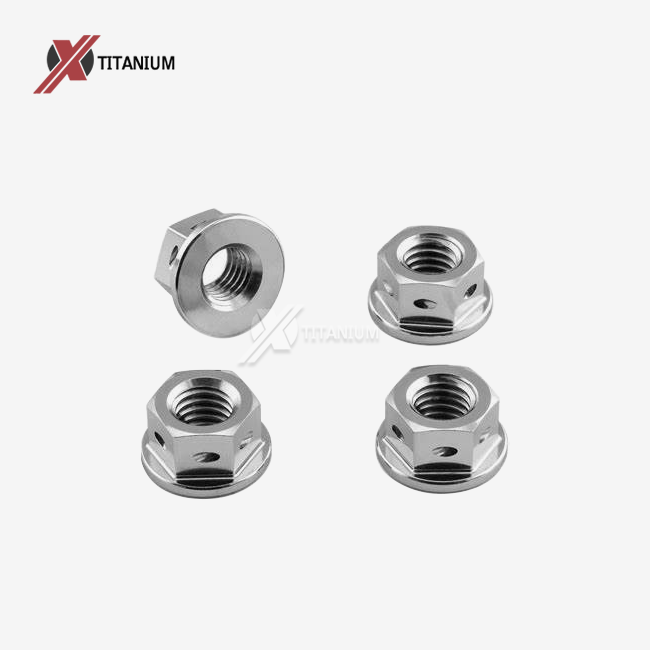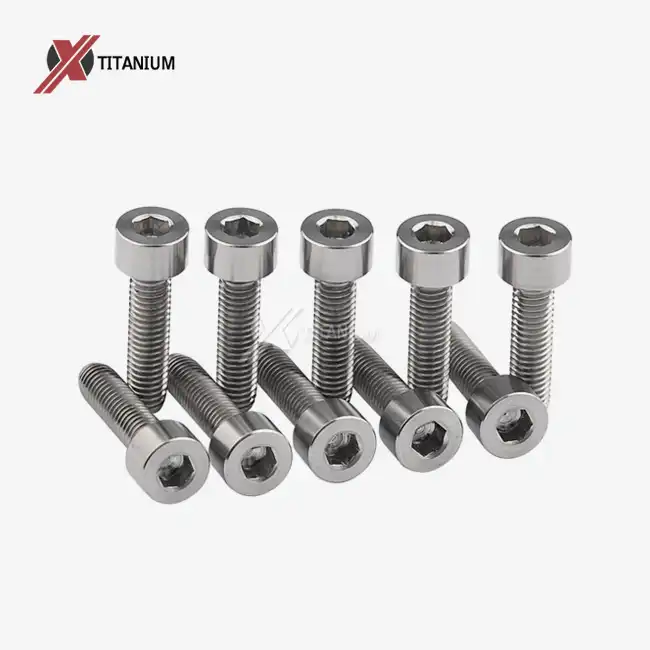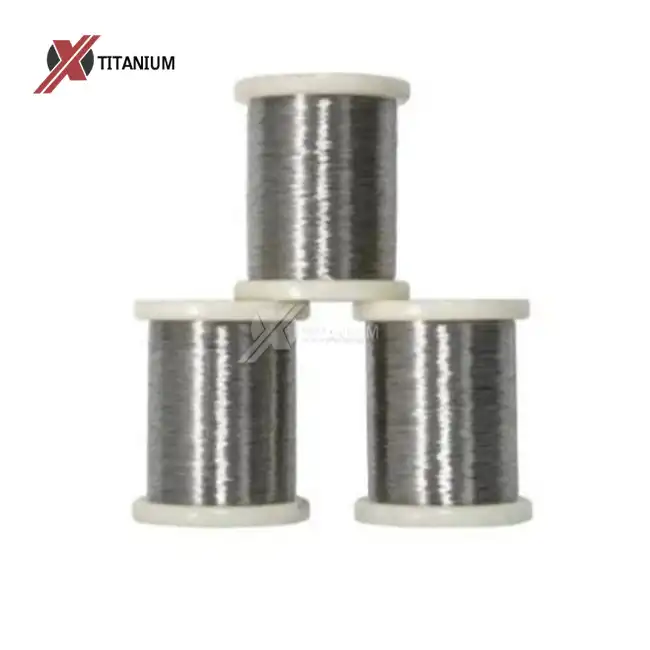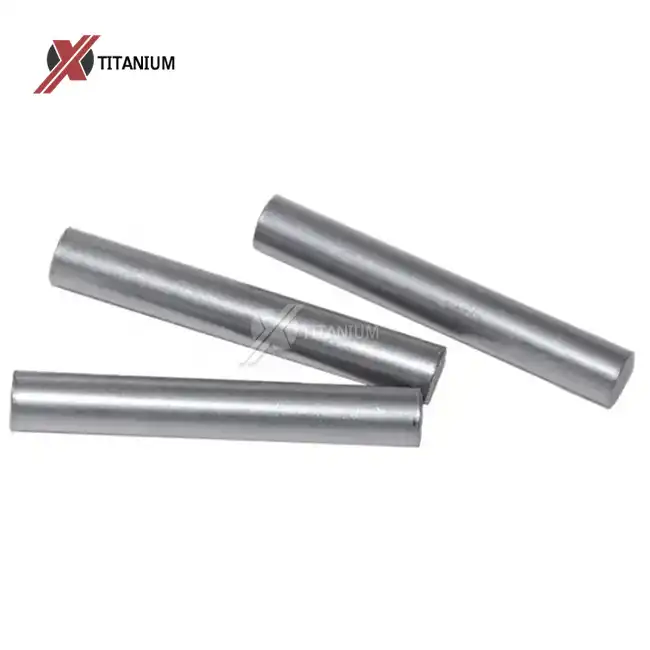The Science Behind Titanium Sprocket Nuts and Vehicle Performance
Understanding Rotational Mass and Its Impact on Speed
Rotational mass plays a pivotal role in vehicle performance, particularly in racing scenarios where every fraction of a second counts. Titanium sprocket nuts significantly reduce this mass, allowing for quicker acceleration and deceleration. The physics behind this improvement lies in the principle of moment of inertia. By decreasing the weight at the outer edges of rotating components, such as sprockets, the overall rotational inertia is reduced. This translates to less energy required to change the rotational speed of the drivetrain, resulting in more responsive throttle input and improved acceleration.
Moreover, the reduced weight of titanium sprocket nuts contributes to lower unsprung mass. Unsprung mass refers to the weight of components not supported by the vehicle's suspension. By minimizing this weight, the suspension can react more quickly to road surface changes, leading to better tire contact and enhanced traction. This improvement in handling is particularly noticeable in high-speed cornering and on uneven surfaces, where maintaining optimal tire contact is crucial for maximizing speed and control.
Strength-to-Weight Ratio: Titanium's Advantage
The exceptional strength-to-weight ratio of titanium is what makes it an ideal material for sprocket nuts in high-performance applications. Titanium alloys, such as Grade 5 (Ti-6Al-4V), offer tensile strengths comparable to many steels but at roughly half the weight. This allows engineers to design sprocket nuts that are just as strong as their steel counterparts while significantly reducing overall mass.
In practical terms, this means that titanium sprocket nuts can withstand the extreme forces and vibrations encountered in racing conditions without compromising on weight savings. The ability to maintain structural integrity under high stress is crucial, as failure of these components could lead to catastrophic consequences during a race. The use of titanium sprocket nuts, therefore, offers a perfect balance of lightweight construction and robust reliability, essential for pushing the boundaries of speed and performance.
Benefits of Titanium Sprocket Nuts Beyond Speed
Corrosion Resistance and Longevity
While the primary focus of titanium sprocket nuts is often their contribution to speed, their corrosion resistance offers significant long-term benefits. Titanium naturally forms a stable, protective oxide layer when exposed to oxygen, making it highly resistant to corrosion from various environmental factors. This characteristic is particularly valuable in motorsports, where components are frequently exposed to harsh conditions, including high temperatures, moisture, and corrosive chemicals.
The corrosion resistance of titanium sprocket nuts translates to extended longevity and reduced maintenance requirements. Unlike steel fasteners that may rust or degrade over time, titanium nuts maintain their integrity and performance characteristics throughout their lifespan. This durability not only ensures consistent performance but also contributes to cost-effectiveness in the long run, despite the higher initial investment in titanium components.
Thermal Properties and Performance Stability
Titanium's thermal properties further enhance its suitability for use in sprocket nuts. The material has a lower thermal expansion coefficient compared to many other metals, including steel and aluminum. This characteristic means that titanium sprocket nuts are less prone to dimensional changes due to temperature fluctuations during high-speed operations.
Stable dimensions under varying thermal conditions are crucial for maintaining proper torque and preventing loosening of the sprocket assembly. This stability ensures consistent performance throughout a race, even as components heat up due to friction and engine heat. Additionally, titanium's lower thermal conductivity can help in reducing heat transfer to surrounding components, potentially contributing to more stable overall drivetrain temperatures.
Implementing Titanium Sprocket Nuts: Considerations and Best Practices
Proper Installation and Torque Specifications
While titanium sprocket nuts offer numerous advantages, their proper installation is crucial to harness these benefits fully. The unique properties of titanium require specific considerations during the installation process. Unlike steel, titanium has a tendency to gall or seize when subjected to high friction, particularly during tightening. To mitigate this risk, it's essential to use appropriate anti-seize compounds specifically formulated for titanium fasteners.
Torque specifications for titanium sprocket nuts may differ from those of steel equivalents due to the material's different coefficient of friction and elastic properties. It's imperative to consult manufacturer guidelines or engineering specifications to ensure the correct torque is applied. Over-tightening can lead to deformation or damage to the nut or the mating surface, while under-tightening may result in loosening during operation. Precision in installation is key to maintaining the integrity of the sprocket assembly and realizing the full performance benefits of titanium sprocket nuts.
Compatibility with Existing Components
When integrating titanium sprocket nuts into an existing drivetrain system, compatibility with other components must be carefully considered. The different material properties of titanium compared to traditional steel fasteners can affect the overall dynamics of the assembly. For instance, the differing thermal expansion rates between titanium nuts and steel sprockets or shafts must be accounted for in the design and assembly process.
Furthermore, the use of titanium sprocket nuts may necessitate adjustments to other aspects of the drivetrain. The reduced weight and altered vibration characteristics could impact the overall balance and harmonics of the rotating assembly. In some cases, re-balancing of the drivetrain or adjustments to dampening systems may be required to optimize performance and prevent unwanted vibrations or resonances at high speeds.
It's also worth noting that the transition to titanium sprocket nuts might require updating maintenance schedules and inspection procedures. While titanium components generally require less frequent replacement due to their durability and corrosion resistance, regular inspections are still crucial to ensure optimal performance and safety, especially in high-stress racing environments.
Cost-Benefit Analysis for Racing Teams
For racing teams considering the adoption of titanium sprocket nuts, a comprehensive cost-benefit analysis is essential. While the initial cost of titanium components is higher than that of traditional steel alternatives, the long-term benefits often justify the investment. The weight savings and performance enhancements can translate into measurable improvements in lap times and overall race results.
However, the decision to implement titanium sprocket nuts should be made in the context of overall vehicle strategy and budget constraints. Teams must weigh the performance gains against other potential areas of improvement. In some cases, the marginal benefit of titanium sprocket nuts might be more significant for certain racing disciplines or vehicle configurations than others.
Additionally, the extended lifespan and reduced maintenance requirements of titanium components should be factored into the long-term cost analysis. While the upfront cost is higher, the reduced need for frequent replacements and the potential for improved reliability during races can offer substantial value over time.
Conclusion
Lightweight titanium sprocket nuts represent a significant advancement in racing technology, offering a combination of weight reduction, strength, and durability that directly contributes to enhanced speed and performance. Their implementation requires careful consideration of installation techniques, compatibility with existing systems, and overall cost-benefit analysis. As racing teams continue to seek every possible advantage, the adoption of titanium sprocket nuts and other advanced titanium components is likely to become increasingly prevalent in the pursuit of speed and efficiency.
For those interested in exploring the potential of titanium sprocket nuts and other high-performance titanium components, Baoji Chuanglian New Metal Material Co., Ltd. offers expertise and custom solutions. To learn more about how our titanium products can enhance your racing or high-performance applications, please contact us at info@cltifastener.com or djy6580@aliyun.com.




